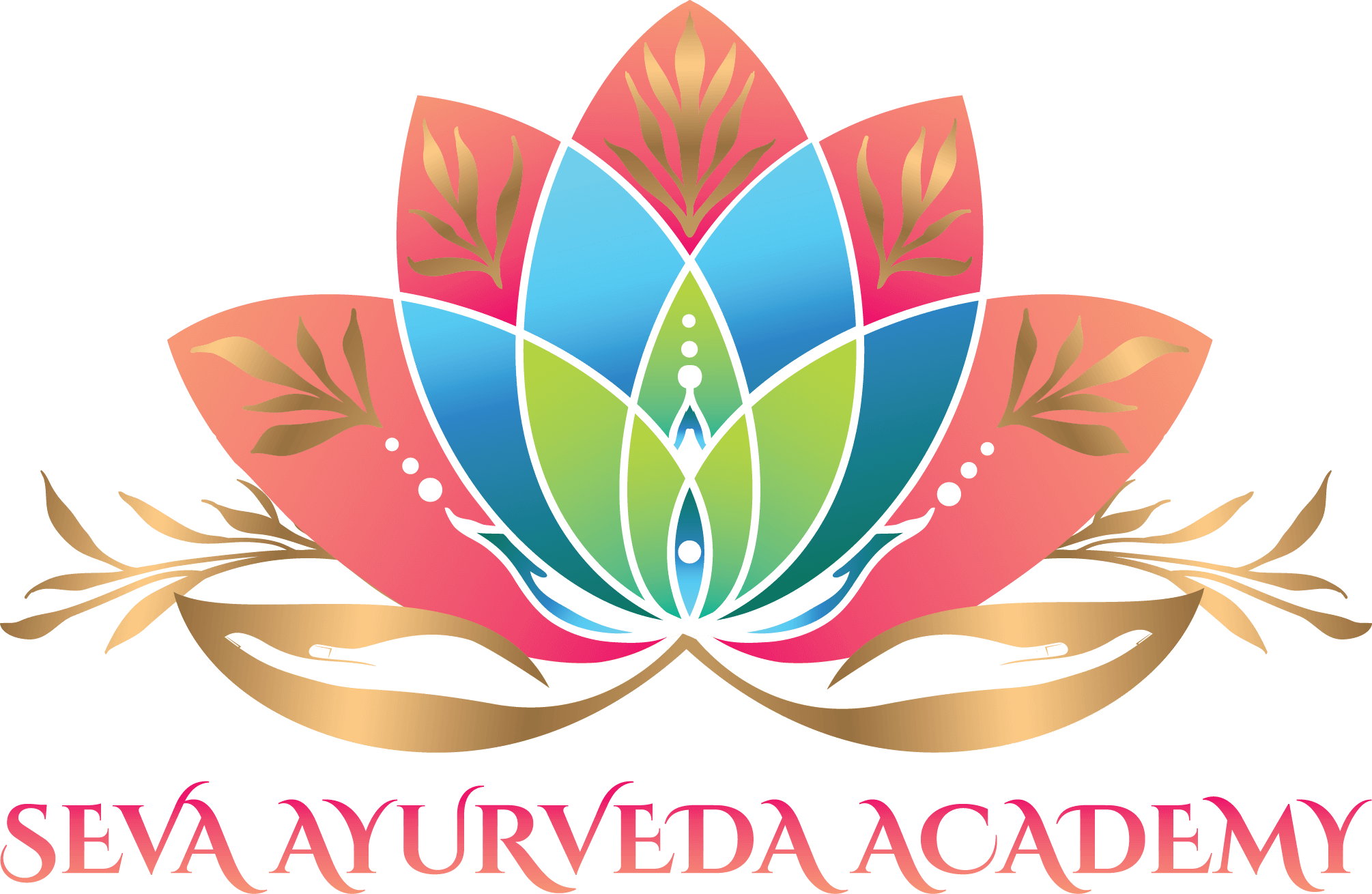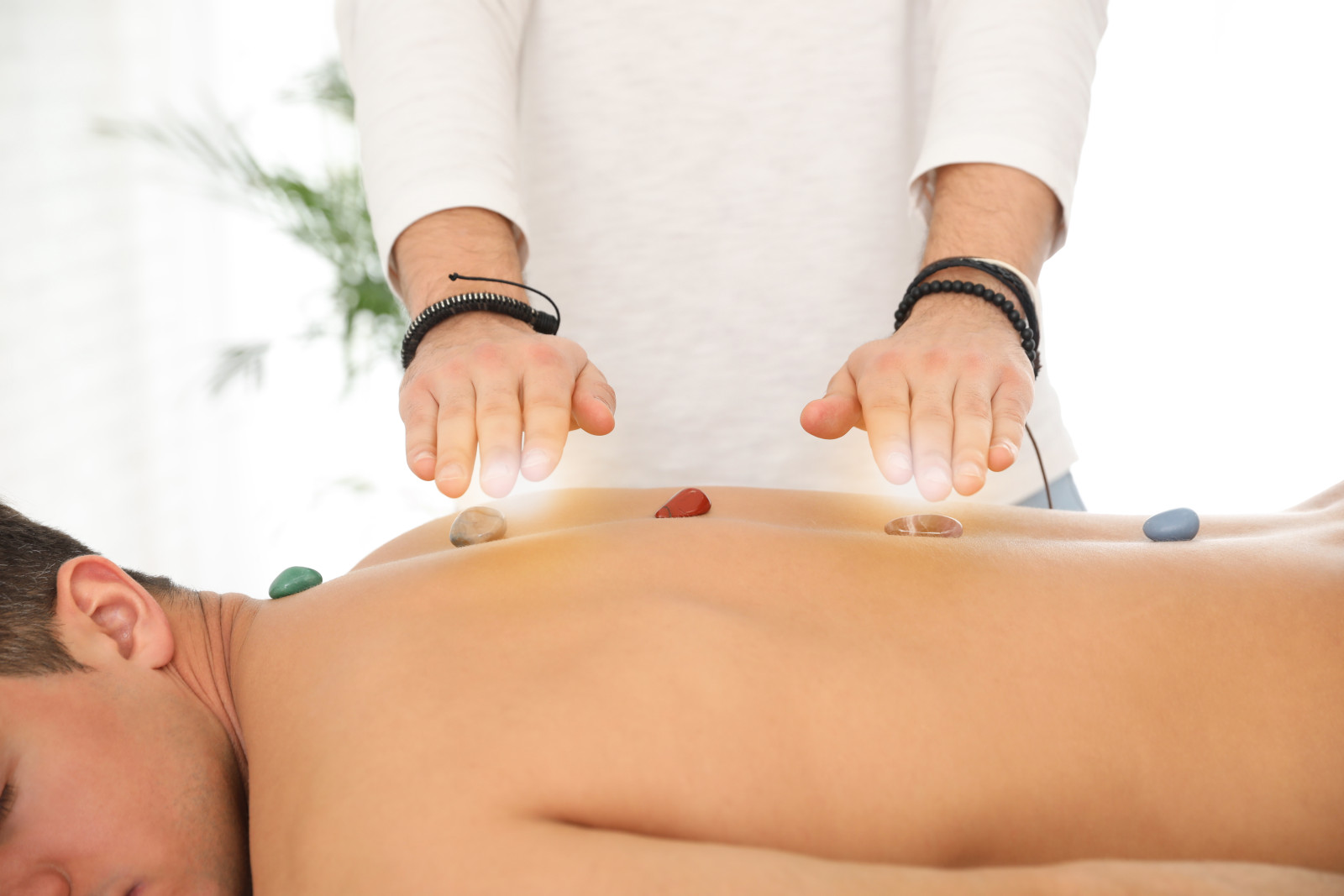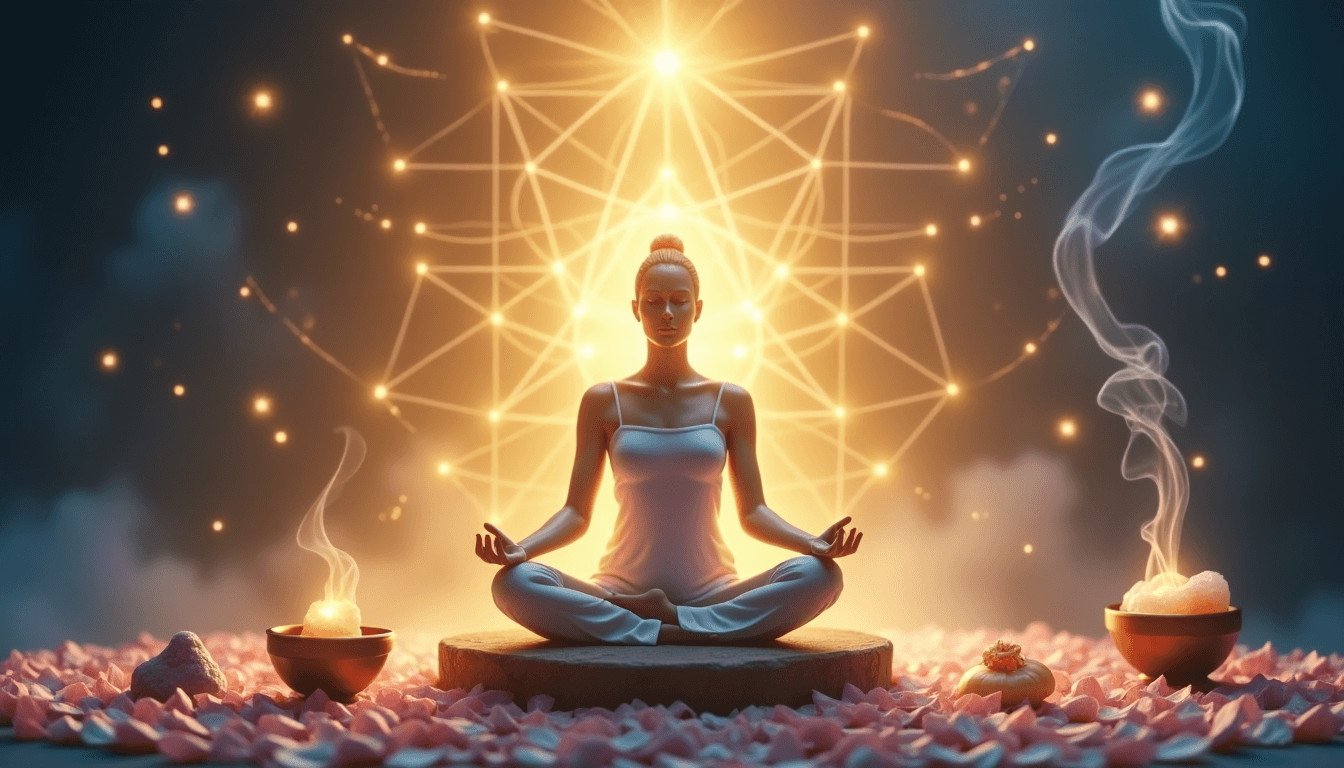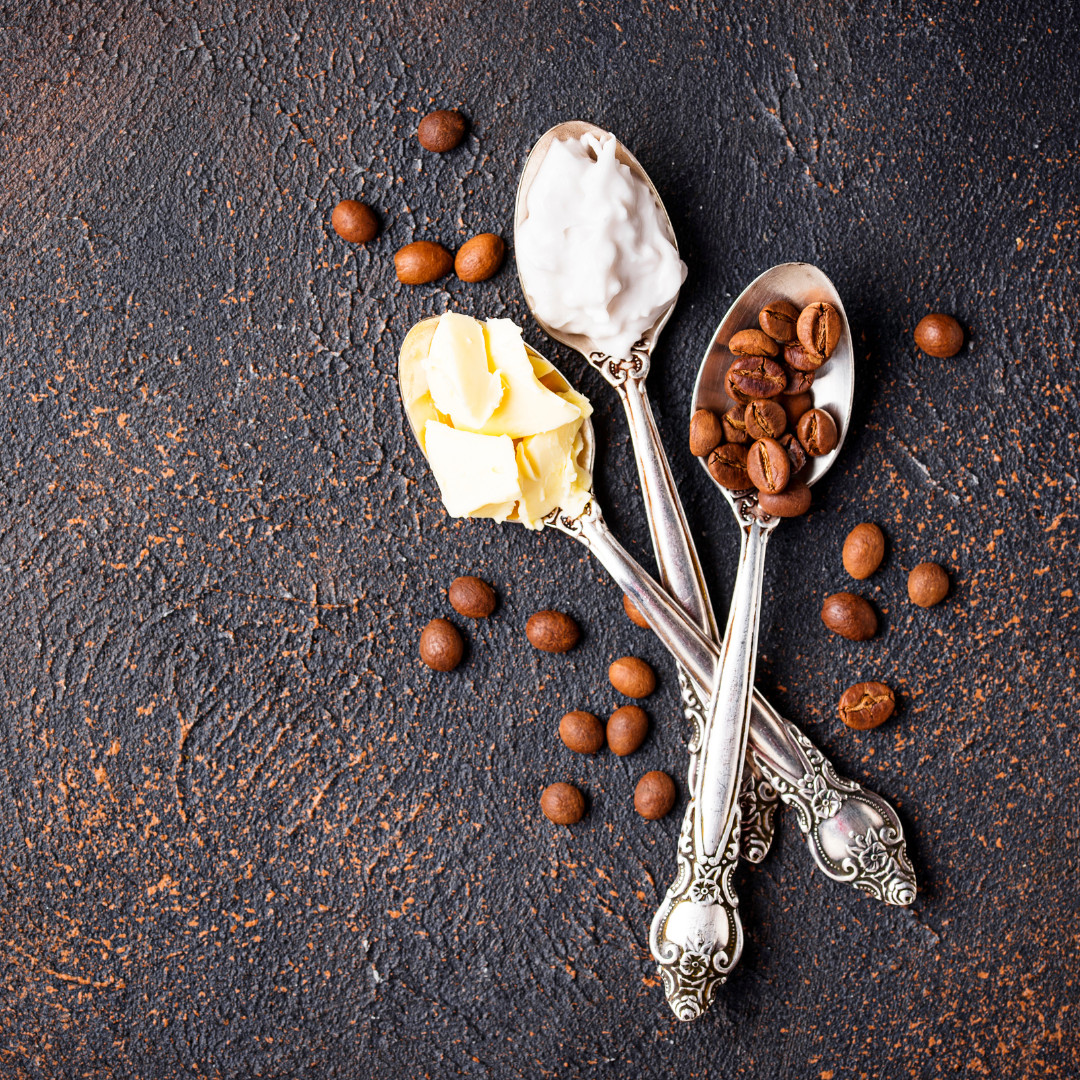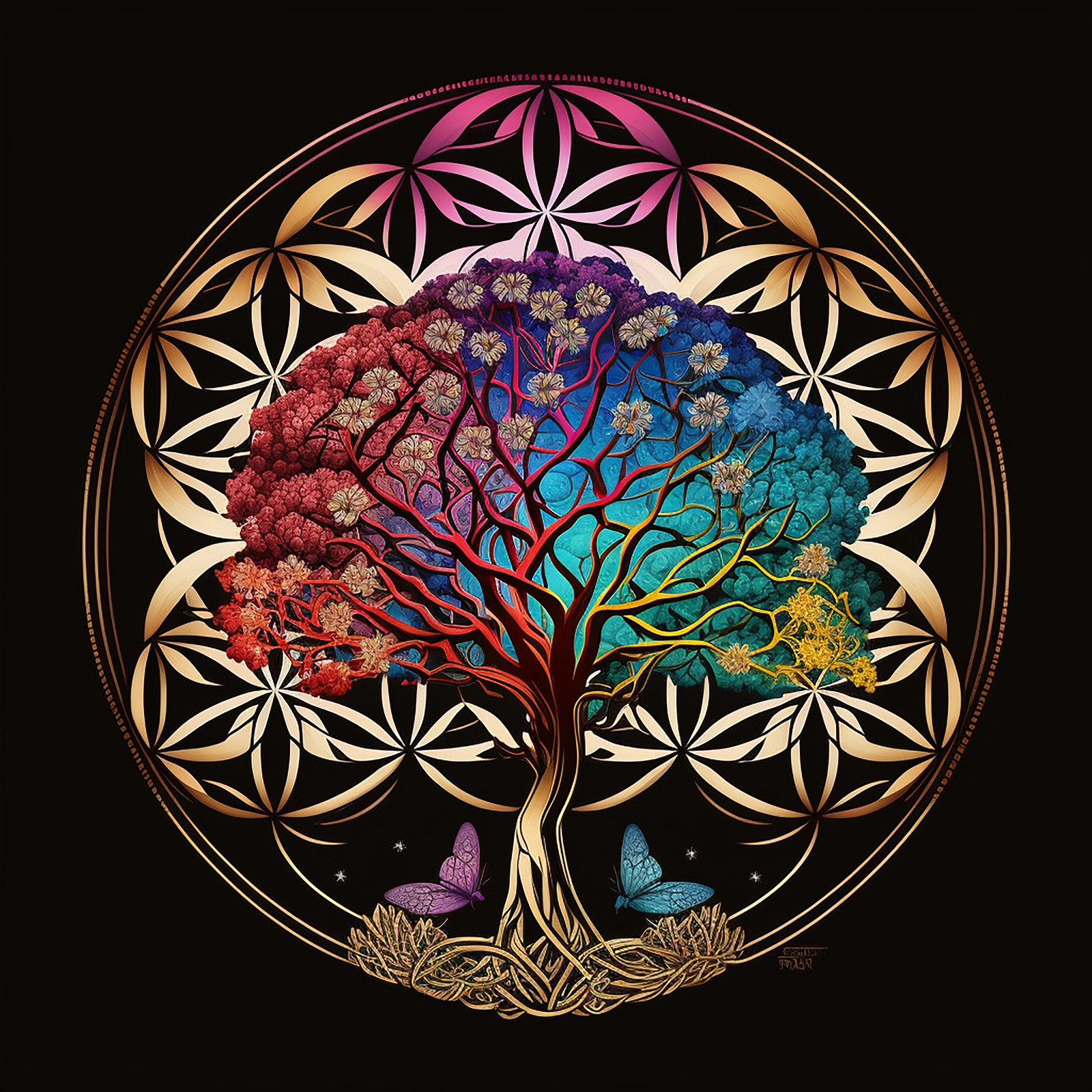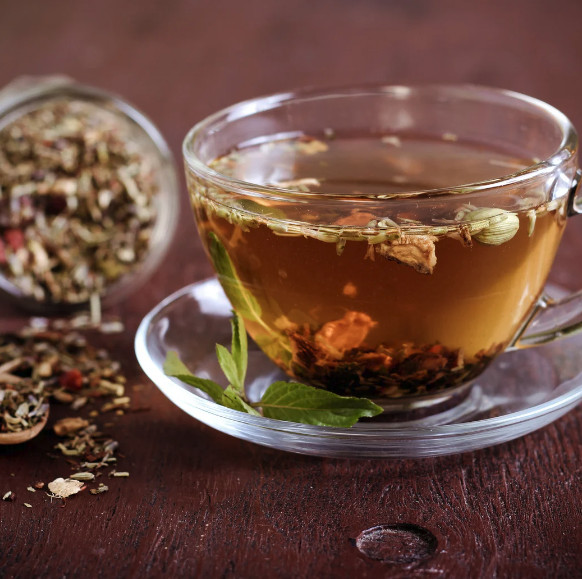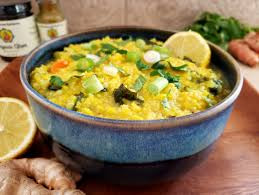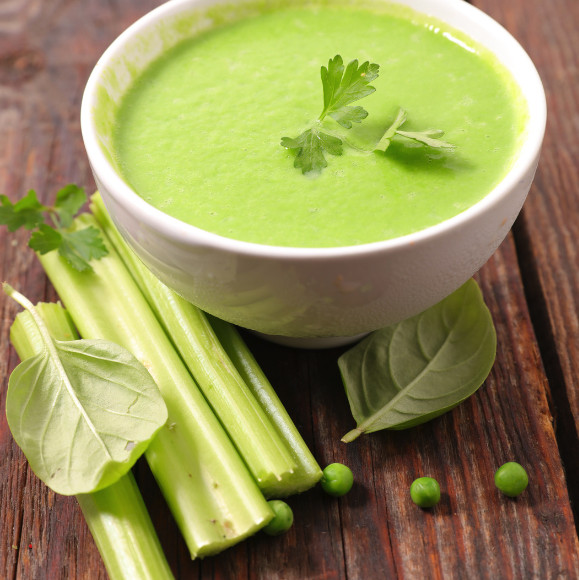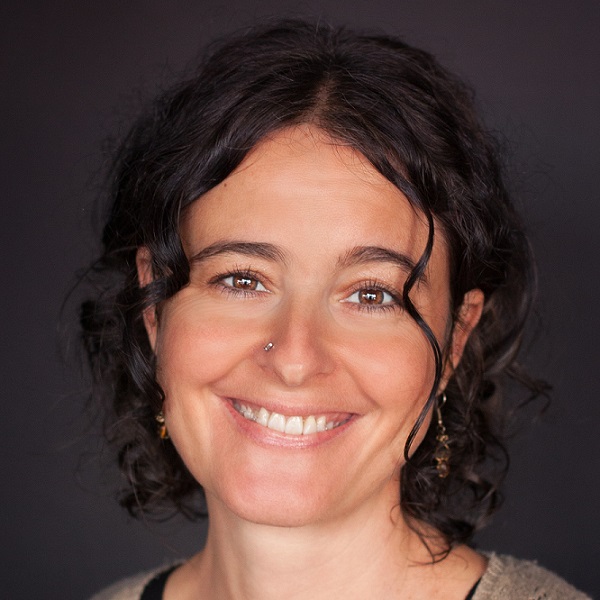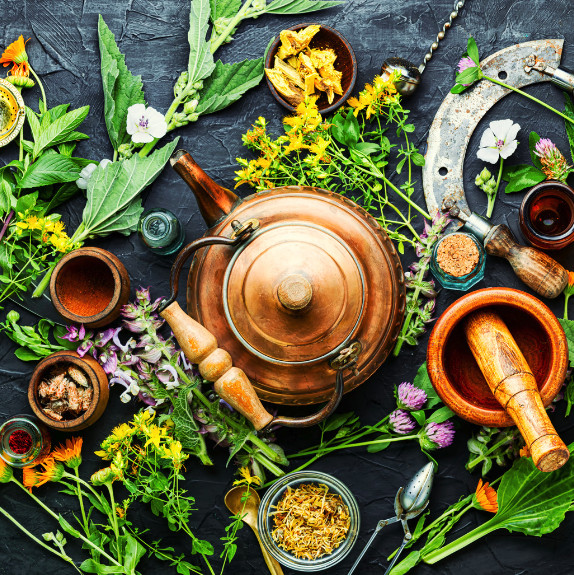
Ayurveda, the ancient holistic healing system from India, categorizes body constitutions into three primary doshas: Vata, Pitta, and Kapha. Each individual typically has a dominant dosha or combination of doshas that define their physical and mental characteristics. Balancing these doshas is crucial for maintaining health and well-being.
Ayurvedic Healing Bone Broth
Bone broth is considered tridoshic because it can benefit all three doshas—Vata, Pitta, and Kapha—when prepared and consumed appropriately. Here’s how it can be beneficial for each dosha:
Vata Balancing
Attributes: Vata is characterized by qualities like coldness, dryness, and lightness.
Bone Broth Benefits: The warming and nourishing nature of bone broth helps to counterbalance Vata's cold and dry qualities. Its rich, grounding nature can help soothe and stabilize Vata energy, making it beneficial for individuals with Vata imbalances such as anxiety, insomnia, and digestive issues. Adding warming spices like ginger or black pepper enhances its Vata-pacifying properties.
Pitta Balancing
Attributes: Pitta is associated with heat, intensity, and fluidity.
Bone Broth Benefits: Although bone broth is generally warming, it can be adapted to suit Pitta by ensuring it's not too spicy or overly heated when served. The cooling and hydrating qualities of well-strained broth can help ease inflammation and digestive discomfort typical in Pitta imbalances. Incorporating cooling herbs like coriander or cilantro can make it more suitable for Pitta individuals.
Kapha Balancing
Attributes: Kapha is known for its moist, heavy, and stable qualities.
Bone Broth Benefits: To address Kapha imbalances, which often involve congestion and sluggishness, bone broth can be made lighter and more stimulating. The light and easily digestible nature of bone broth helps to alleviate Kapha's heaviness. Adding pungent and warming spices like turmeric or cayenne pepper can further enhance its Kapha-pacifying effects.
Nutritional Profile
Bone broth is celebrated for its rich content of essential nutrients such as collagen, gelatin, and minerals like calcium, magnesium, and phosphorus. It also contains fat-soluble vitamins, which are crucial for bone health and overall vitality. The easily digestible form of these nutrients ensures that they are readily absorbed and utilized by the body, making bone broth a powerful ally in supporting joint health, skin elasticity, and gut integrity across all dosha types.
By customizing the preparation of bone broth to suit individual dosha needs, it can serve as a versatile and nourishing staple in an Ayurvedic diet, helping to promote balance and well-being. Always tailor the herbs and spices to address specific doshic attributes or imbalances for the best results.
Here is an idea for a recipe for Ayurvedic Bone Broth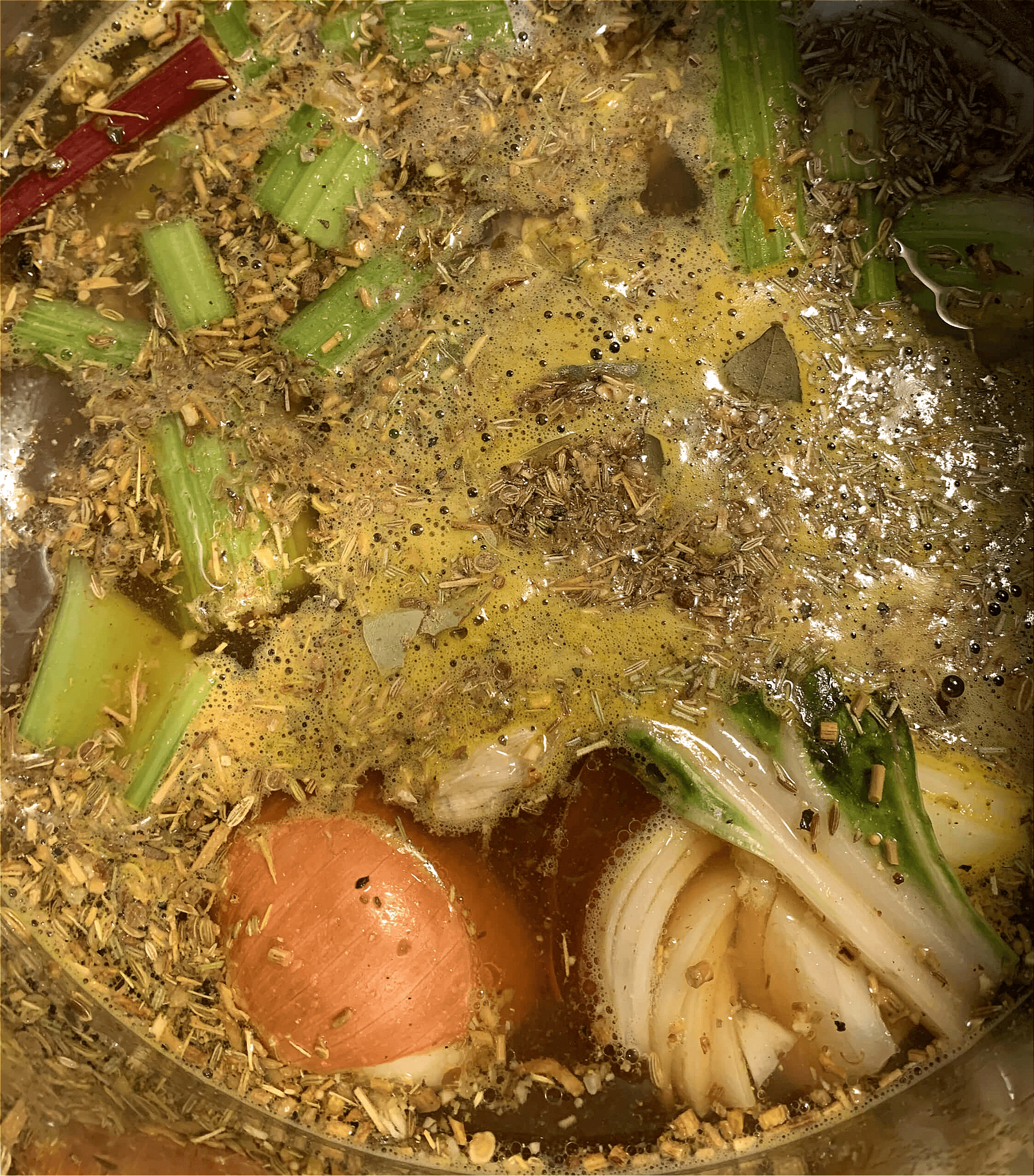

Ingredients
10 cups purified water
4 “bone marrow” beef bones (available in whole foods or most meat departments)
1 pound of chicken breast or beef stew meat (optional, but recommended for flavor)
2 carrots, sliced
2 celery sticks, sliced
1 small to medium beet, chopped (replace with sweet potato for Pitta)
1/2 onion, chopped
Fresh ginger (2 inch cube), grated or finely chopped
1/4 teaspoon each of turmeric, fennel, coriander, fenugreek, brown mustard, and cumin seed*
1/4 teaspoon black peppercorns, freshly ground
1 lemon, juiced
1/4 teaspoon pink salt, mineral salt, or sea salt
*Optional to add 1 Tbl Astragalus, Burdock Root, and/or Licorice Root for additional immune and liver support
Healing Bone Broth Recipe
1. Add the bones, chopped veggies, fresh ginger, turmeric, fennel, coriander, fenugreek, brown mustard, cumin seed, and black pepper to the crock pot. If meat is being used, add this now as well.
2. Fill the crock pot with water until it is 2 to 3 inches from the top.
3. Cover the pot and turn it on a low setting. Cook for 10 to 16 hours. If needed a high setting can be used for 6 to 8 hours.
Optional Doshic Variations
Vata
This recipe is very beneficial for Vata types and is great during times of Vata imbalances such as depletion, weakness, constipation, osteoporosis, and arthritis. If there is anemia, it is recommended to use a red meat to steep with the bones. Otherwise, no changes are needed!
Pitta
Pitta types can replace the beets and onion with more cooling root veggies such as sweet potatoes and parsnips. They should replace the lemon with lime and add in fresh cilantro leaves (about 1/2 cup). Pitta types should avoid adding any red meat to the base. White meat chicken would be a better option if meat is to be added. Otherwise, this recipe is very beneficial for Pitta and an effective way to reduce inflammation in the body.
Kapha
To enhance digestion, they can add in extra heating spices such as cayenne pepper. They can also add in chopped garlic cloves, chili pepper and/or a splash of apple cider vinegar if desired. The salt should be kept to a minimum, ideally using pink Himalayan which is best for Kapha types. This is a great option for Kapha types as a healthy and light snack between meals!
Perhaps you dont want to use bones in your breath, totally understandable and you should do you. So here is a simple veggie broth recipe and you can incorporate any of the herbs and spices and improvise to make it how you like it!
Vegetable Broth
*4-5 Servings
3 Stalks Celery
3 Carrots
3 Cloves Garlic
2 Onions
1 inch each minced fresh Ginger & Turmeric
2 Bay Leaves
3 Cups Misc Vegetable Scraps
Option to add coriander, cumin, fennel, fenugreek, salt, pepper, thyme, astragalus, burdock root, licorice root
Directions
Simmer on the stove for 30-60 Minutes. Remove from heat and allow to cool for some time. Strain and refrigerate up to 1 week or freeze up to 6 months.
Slow cook in a crock pot for up to 8 hours.
4. Strain the broth. Add the fresh lemon juice and salt, and then place the broth into glass jars or glass Tupperware to let cool.
5. If you are sensitive to the fat, you can let the broth cool in the refrigerator before consuming and scrape the layer of fat off of the top. Once refrigerated, this broth will last up to a week. 7. The remaining strained vegetable ingredients can be consumed, added to other dishes, given to the dog (NOT the bones!) or composted. The bones should be tossed in the garbage (once again, do not give them to the dog after cooking). 8. If there is extra broth, you can freeze it in ziplock bags or plastic tupperware as needed. This will last for 3 to 6 months. 9. Try to consume at least a cup of broth every day. Feel free to drink the broth like a tea or make this as a base for soups, dal, kitchari or any other appropriate dish. It makes everything more nourishing and improves the taste!
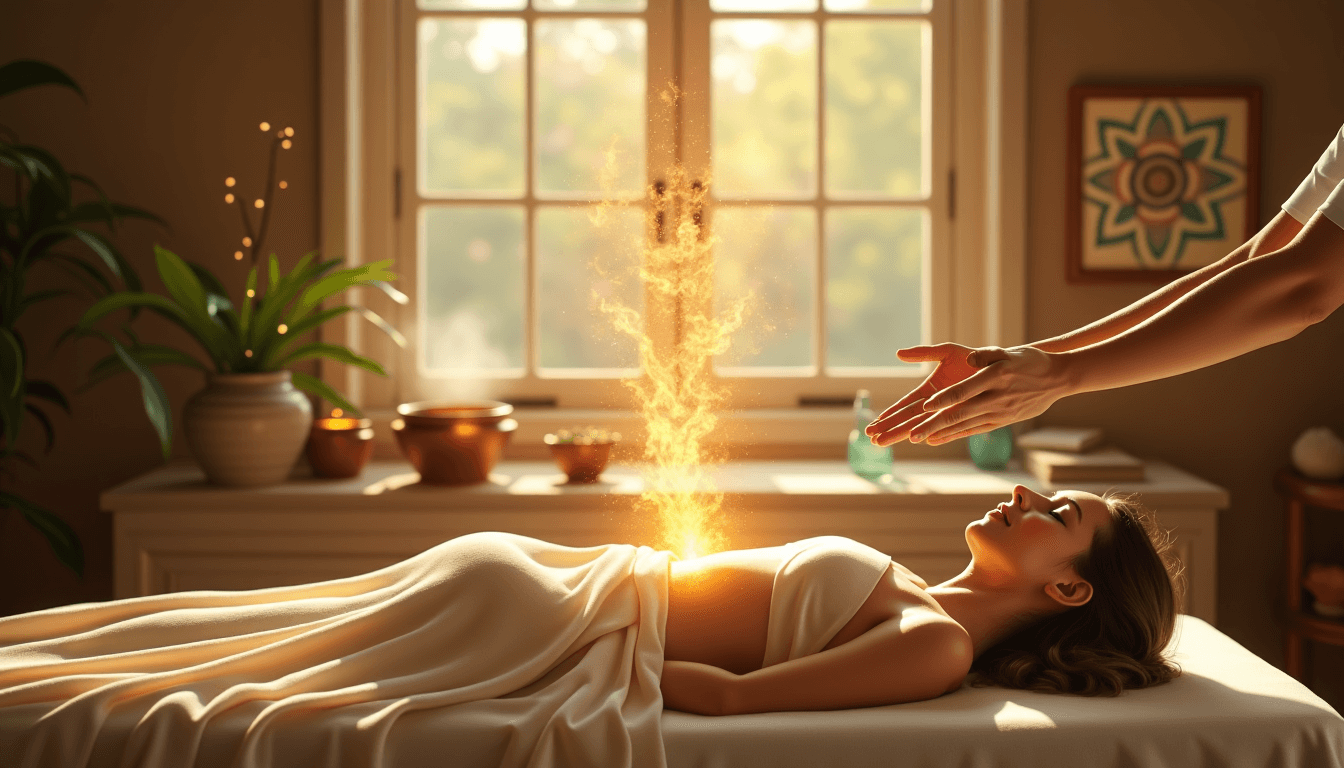 Image Source: AI Generated
Image Source: AI GeneratedThe quest for holistic healing has led many modern practitioners back to ancient wisdom. Polarity therapy, a comprehensive healing system developed in the mid-20th century, draws deeply from Ayurveda's 5,000-year-old principles of energy medicine.
This unique blend of Eastern and Western healing approaches offers a powerful framework for understanding the body's energy systems. Through its integration of Ayurvedic concepts like chakras, elements, and energy flow, polarity therapy provides a modern interpretation of time-tested healing wisdom.
In this article, we explore the fascinating connection between polarity therapy and Ayurveda, examining how ancient principles inform modern healing practices. We'll uncover the philosophical foundations, energy concepts, and practical applications that bridge these two powerful healing traditions.
The Ancient Roots of Polarity Therapy
At the heart of modern energy medicine lies a remarkable synthesis of healing wisdom, pioneered by Dr. Randolph Stone, a skilled practitioner of osteopathy, naturopathy, and chiropractic care [1]. His quest to understand the fundamental principles of healing would lead to the creation of polarity therapy, a system that bridges ancient Eastern wisdom with Western medical knowledge.
Origins in Ayurvedic Medicine
Dr. Stone's work began with a crucial observation: across different cultures and healing traditions, the concept of life energy remained central [1]. While this energy carried different names - chi, ki, or prana - its importance in maintaining health was universal. Stone noticed striking similarities between various healing systems, particularly in their understanding of energy flow and balance.
Dr. Stone's Journey to India
In 1955, Stone embarked on a transformative journey to India, spending six months studying and teaching in Bombay and Jalandhar [2]. This wasn't just a brief visit - he established a pattern of spending half of each year in India, immersing himself in the spiritual and healing traditions of the East [2]. His dedication to understanding Eastern wisdom led to his initiation into the Radha Soami Satsang Beas tradition in 1945 [3].
Integration of Eastern and Western Healing
Stone's genius lay in his ability to weave together diverse healing traditions. His background included:
- Western medical practices (osteopathy, chiropractic)
- Traditional Chinese medicine
- Ayurvedic principles
- Yogic practices
- Reflexology
This integration wasn't merely theoretical. Stone took the practical aspects of Ayurvedic marma points therapy and skillfully combined them with Western techniques like osteopathic spinal alignment and craniosacral therapy [4]. He believed that lasting healing required more than just mechanical manipulation of the body - it needed an understanding of the body's energy systems [4].
What made Stone's approach unique was his practical application of esoteric knowledge. He developed a comprehensive system that addressed not just physical symptoms but the underlying energy patterns that influence health [1]. His work showed that when there's proper energy flow, the body naturally moves toward balance and healing.
By the time he retired to India in 1974 [2], Stone had created a healing system that honored both the scientific precision of Western medicine and the energetic wisdom of Eastern traditions. His work continues to influence practitioners who seek to understand the deeper dimensions of healing.
Understanding the Five Elements
The five elements form the cornerstone of both Ayurvedic wisdom and polarity therapy's healing approach. These fundamental building blocks—ether, air, fire, water, and earth—create the foundation for understanding how energy moves through our bodies [5].
Elemental Theory in Ayurveda
In Ayurvedic tradition, these five elements are more than physical matter—they're the basic qualities that shape our existence [6]. Each element carries distinct characteristics:
- Ether (Space): Governs stillness, peace, and mental clarity
- Air: Controls movement, agility, and lightness
- Fire: Manages heat, vitality, and transformation
- Water: Influences flow, connections, and emotional balance
- Earth: Provides structure, stability, and grounding [7]
Application in Polarity Therapy
Polarity therapy uniquely interprets these elements through the lens of energy medicine. Each element corresponds to specific body functions and energy patterns [8]. The therapy recognizes that these elements are present in every cell of our body, working in harmony to maintain health [8].
In practice, polarity therapists work with these elemental energies through specific hand positions and therapeutic touches. As energy currents flow down the body, they create crossing points called chakras, each relating to different elemental qualities [5].
Balancing Elements for Healing
When elements become imbalanced, specific symptoms can emerge. For instance, a fire imbalance might manifest as digestive issues or inflammation, while an air imbalance could lead to nervous system disorders [4].
The beauty of polarity therapy lies in its practical approach to elemental balance. Through gentle bodywork, practitioners help release blocked energy patterns, allowing the elements to flow freely [4]. This process often reveals deeper emotional patterns—for example, unresolved resentments might manifest as a fire element disturbance, showing up as physical symptoms in the solar plexus area [4].
Understanding these elemental relationships helps practitioners and clients work together to restore balance. By becoming aware of how thoughts and feelings get stored in the body, individuals can release blockages and allow elemental energies to flow naturally, often leading to the spontaneous resolution of various symptoms [4].
The Three Gunas and Energy Principles
Deep within the heart of polarity therapy lies a profound understanding of the three universal energetic qualities known as the gunas. These fundamental forces, borrowed from Ayurvedic wisdom, shape how energy moves and transforms within our bodies.
Sattva, Rajas, and Tamas
The three gunas represent distinct qualities that influence our physical and mental well-being. Sattva embodies balance, wisdom, and harmony, representing the state of optimal health. Rajas manifests as action and movement, while Tamas represents inertia and stability [9]. These qualities aren't just philosophical concepts—they're practical tools for understanding how energy flows through our bodies.
Polarity's Interpretation
Polarity therapy uniquely translates these ancient principles into hands-on healing techniques. Practitioners use three distinct types of touch, each corresponding to a specific guna:
- Sattvic Touch: Light and gentle, creating openness and receptivity to healing
- Rajasic Touch: Stimulating and energizing, helping awaken blocked energy
- Tamasic Touch: Deep and dispersing, breaking up energy crystallizations [10]
This three-fold approach allows practitioners to work with energy in its different manifestations, adapting their touch based on the client's needs and the type of blockage being addressed [11].
Energy Flow and Balance
In polarity therapy, practitioners understand that energy moves in specific patterns—flowing outward from a neutral center (Sattva), expanding through active force (Rajas), and then returning through contracting energy (Tamas) [12]. This continuous cycle mirrors the natural rhythms of life itself.
When these energies become imbalanced, specific symptoms can emerge. For instance, excess Rajas might manifest as anxiety or restlessness, while predominant Tamas could lead to lethargy or stagnation [9]. Through skilled application of different touch techniques, polarity therapists help restore the natural flow and balance of these energetic qualities.
The beauty of this system lies in its holistic approach. Rather than just treating symptoms, practitioners work with these fundamental energetic principles to support the body's natural healing processes. By understanding how the gunas influence both physical and mental well-being, polarity therapy offers a sophisticated framework for addressing health challenges at their energetic source [11].
Chakras and Energy Centers
Energy centers known as chakras serve as vital hubs in the body's subtle energy system, forming a crucial bridge between physical and energetic healing. These powerful centers play a fundamental role in both Ayurvedic wisdom and polarity therapy's approach to wellness.
Ayurvedic Understanding of Chakras
The concept of chakras emerges from ancient traditions, where these energy centers are seen as connecting points for major nadis or energy channels [13]. While chakras belong to the subtle body rather than the physical form, their influence extends to both bodily and mental well-being. Interestingly, the original Sanskrit writings describe chakras not as fixed structures but as fluid manifestations of energy that can be activated through specific practices [13].
Polarity's Energy Mapping
Polarity therapy offers a unique interpretation of the chakra system, focusing primarily on five main energy centers aligned with the elements [14]. According to this framework, energy enters through the third-eye center before dividing into two distinct 'rivers' of energy:
- Positive charge: Flows along the right side of the body
- Negative charge: Moves through the left side
- Neutral zone: Creates balance between the two forces [5]
These energy currents cross at specific points, creating vortexes that correspond to the five elemental chakras. Each chakra resonates with its own unique vibration and frequency, constantly exchanging energy between positive, negative, and neutral poles [14].
Therapeutic Applications
In practical application, polarity therapy practitioners employ various techniques to balance and harmonize these energy centers. The approach combines:
- Bodywork: Using specific touch patterns ranging from light to deep pressure
- Movement: Incorporating gentle rocking motions
- Energy work: Applying reflexology and precise pressure points [14]
The therapeutic process aims to restore proper energy flow when blockages occur. When chakras become imbalanced, they can manifest as physical discomfort or emotional disturbances [15]. Through skilled application of polarity therapy techniques, practitioners help release these blockages, allowing energy to flow freely through the chakra system [16].
What makes polarity therapy's approach particularly effective is its integration with other healing modalities. The system combines craniosacral techniques with Ayurvedic concepts of elements and gunas, creating a comprehensive healing approach [14]. This integration allows practitioners to address both physical symptoms and their underlying energetic causes, supporting the body's natural healing processes.
Philosophical Foundations
Beyond the physical techniques and energy principles lies a profound philosophical framework that shapes polarity therapy's approach to healing. This unique system views wellness through a lens that encompasses both tangible and intangible aspects of human experience.
Spiritual Aspects of Healing
Polarity therapy practitioners create a sacred healing space through attentive listening and wisdom, supporting clients on their personal healing journey [17]. This approach goes beyond mere physical treatment—it's about facilitating a deep reconnection with one's inner self and vital life force. The practice draws inspiration from various wisdom traditions, recognizing that healing occurs on multiple levels simultaneously [18].
Mind-Body Connection
The relationship between mental state and physical health forms a cornerstone of polarity therapy. "As we think, so we are" became one of Dr. Stone's fundamental principles [19]. This understanding reveals how:
- Negative thoughts and reactions can manifest as physical ailments
- Mental attitude directly influences energy flow in the body
- Self-awareness leads to better health outcomes
Research suggests that changes in the human energy field can influence both disease progression and healing potential [1]. This insight has led practitioners to develop approaches that address both physical symptoms and their emotional roots.
Holistic Approach to Wellness
Polarity therapy stands out through its comprehensive framework that addresses four essential pillars of health [3]:
- Bodywork: Gentle touch techniques to release energy blockages
- Nutrition: Guidelines for maintaining energetic balance through diet
- Exercise: Specific movement patterns to enhance energy flow
- Counseling: Support for emotional and psychological well-being
This integrated approach recognizes that true healing requires attention to all aspects of human experience. The therapy aims to help individuals:
- Reconnect with Self: Facilitating a deeper understanding of one's vital nature
- Release Blockages: Addressing physical and emotional obstacles to wellness
- Restore Balance: Supporting natural health through energetic alignment [17]
What makes polarity therapy particularly effective is its emphasis on personal transformation. Rather than simply treating symptoms, practitioners work to realign the body with the soul, viewing physical conditions as reflections of deeper thoughts, beliefs, and emotional patterns [19]. This perspective encourages individuals to take an active role in their healing journey, fostering greater self-responsibility and improved self-esteem.
The practice acknowledges that life energy serves as the crucial link between mind and body. When this energy flows freely, it supports not only physical health but also emotional resilience and mental clarity. Through this understanding, polarity therapy offers tools for maintaining a balanced lifestyle, empowering individuals to participate actively in their healing process [19].
Conclusion
Polarity therapy stands as a remarkable bridge between ancient Ayurvedic wisdom and modern healing practices. This comprehensive system weaves together the profound understanding of elements, gunas, and chakras with practical therapeutic applications, creating a powerful framework for holistic wellness.
The beauty of polarity therapy lies in its ability to address health challenges at multiple levels - physical, emotional, and energetic. Through its unique interpretation of Ayurvedic principles, practitioners can help release energy blockages, restore natural balance, and support the body's innate healing abilities.
Dr. Stone's pioneering work continues to offer valuable insights for those seeking deeper healing. His integration of Eastern wisdom with Western medical knowledge proves that ancient principles remain relevant and effective in modern healthcare. The system he created provides practical tools for maintaining wellness while honoring the profound connection between body, mind, and spirit.
Are you inspired to learn the fundamentals of Polarity Therapy and Marma?? Learn More
References
[1] - https://www.wellnessinstitute.net/articles/detail/17
[2] - https://www.energyschool.com/drstonechronology
[3] - https://renewcraniosacraltherapy.com/polarity-therapy/
[4] - http://www.polaritywellness.co.uk/polarity-therapy-and-ayurveda/
[5] - https://polaritytherapy.com/five-elements
[6] - https://ayurhealing.net/blog/five-elements-of-ayurveda/
[7] - https://polaritytherapy.org/2017/12/02/healing-through-the-elements/
[8] - https://polaritytherapy.org/2020/07/21/cells-and-the-five-elements-a-polarity-perspective/
[9] - https://www.easyayurveda.com/2019/01/15/tridosha-satva-rajas-tamas/
[10] - http://www.garyauerbach.com/dga/Korn - Polarity Therapy for Dementia caregivers.pdf
[11] - https://www.polaritywellness.com/polarity-therapy
[12] - https://www.positivehealth.com/article/polarity-therapy/polarity-therapy-linking-ancient-knowledge-and-modern-physics
[13] - https://www.gersonayurveda.com/giam-blog/2019/1/6/ayurveda-and-the-chakras-by-scott-gerson-md-mphil-ayurveda-phd-ayurveda
[14] - https://soniradiance.com/polarity-therapy-chakra-balancing/
[15] - https://www.windowstotheheart.net/balancing-your-energy-flow-with-polarity-therapy/
[16] - https://polaritytherapy.org/2018/02/07/science-meets-energy-a-hands-on-guide-to-the-human-energy-field/
[17] - https://polaritytherapy.com/whatispolarity
[18] - https://amadeamorningstar.net/the-institute/
[19] - https://downtoearthbodyworks.com/polarity
[2] - https://www.energyschool.com/drstonechronology
[3] - https://renewcraniosacraltherapy.com/polarity-therapy/
[4] - http://www.polaritywellness.co.uk/polarity-therapy-and-ayurveda/
[5] - https://polaritytherapy.com/five-elements
[6] - https://ayurhealing.net/blog/five-elements-of-ayurveda/
[7] - https://polaritytherapy.org/2017/12/02/healing-through-the-elements/
[8] - https://polaritytherapy.org/2020/07/21/cells-and-the-five-elements-a-polarity-perspective/
[9] - https://www.easyayurveda.com/2019/01/15/tridosha-satva-rajas-tamas/
[10] - http://www.garyauerbach.com/dga/Korn - Polarity Therapy for Dementia caregivers.pdf
[11] - https://www.polaritywellness.com/polarity-therapy
[12] - https://www.positivehealth.com/article/polarity-therapy/polarity-therapy-linking-ancient-knowledge-and-modern-physics
[13] - https://www.gersonayurveda.com/giam-blog/2019/1/6/ayurveda-and-the-chakras-by-scott-gerson-md-mphil-ayurveda-phd-ayurveda
[14] - https://soniradiance.com/polarity-therapy-chakra-balancing/
[15] - https://www.windowstotheheart.net/balancing-your-energy-flow-with-polarity-therapy/
[16] - https://polaritytherapy.org/2018/02/07/science-meets-energy-a-hands-on-guide-to-the-human-energy-field/
[17] - https://polaritytherapy.com/whatispolarity
[18] - https://amadeamorningstar.net/the-institute/
[19] - https://downtoearthbodyworks.com/polarity
